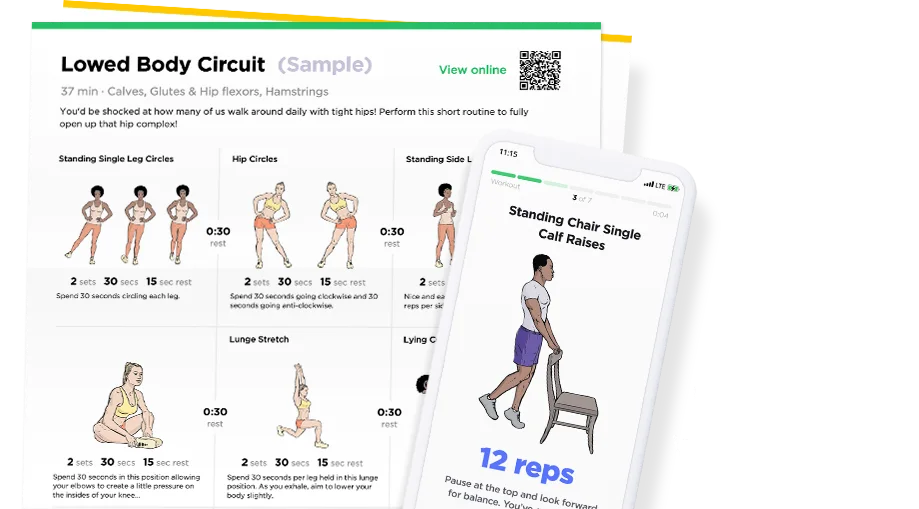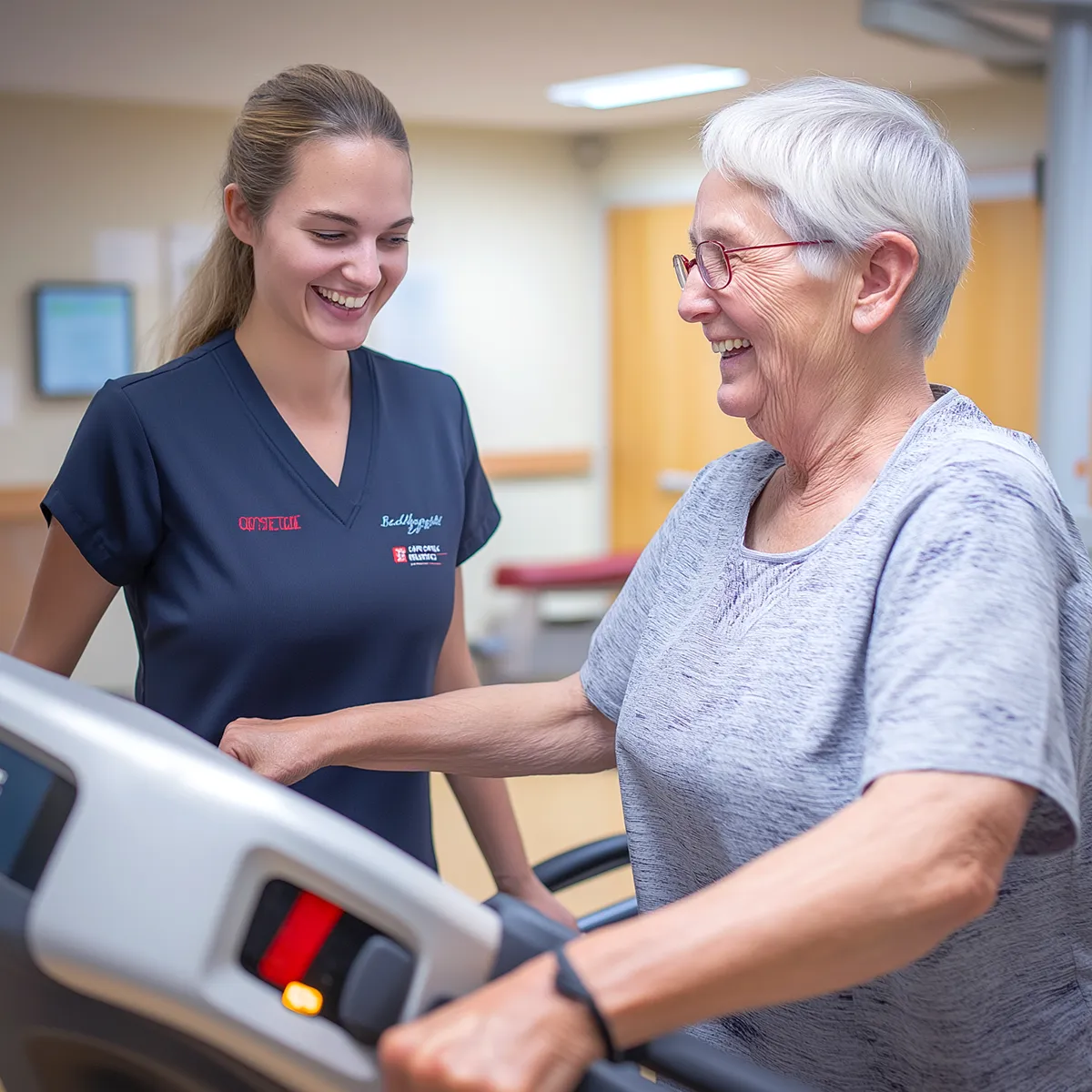Heart Strong Recovery: Post-Surgical Strength (No Restrictions)
A supervised resistance training plan guiding cardiac rehab patients safely from basic to progressive loads, restoring full-body strength post-surgery.

This program is designed for Phase 2-3 (outpatient and maintenance) cardiac rehab patients post-surgery, with a moderate-to-high functional level and low risk of event, free of movement restrictions. It emphasizes strength and resistance training to rebuild full-body strength, utilizing hand weights (dumbbells or resistance bands) at a beginner-to-intermediate progression level. Delivered in an in-clinic/supervised CR setting, it suits all ages, guiding you through safe, controlled exercises under supervision to restore upper and lower body function and prepare for independent resistance training.
Exercise program details
Structure and suggested frequency:
The program progresses through week blocks (Weeks 1-2, 3-4, 5-6, and 7+), offering three distinct workouts per block for variety and gradual advancement. All exercises use hand weights (dumbbells or resistance bands) to target major muscle groups (chest, back, legs, arms, shoulders) for comprehensive strength restoration.
- Weeks 1-2 (RPE: 11-13, Intensity: 50% 1-RM, Frequency: 2-3 nonconsecutive days/week, Duration: 30-40 min)
Light hand weights to kick off strength recovery. - Weeks 3-4 (RPE: 11-13, Intensity: 55-60% 1-RM, Frequency: 2-3 nonconsecutive days/week, Duration: 40-50 min)
Slightly heavier weights to build on early gains. - Weeks 5-6 (RPE: 11-13, Intensity: 60-65% 1-RM, Frequency: 2-3 nonconsecutive days/week, Duration: 50-60 min)
Heavier weights and more complex movements introduced. - Weeks 7+ (RPE: 11-13, Intensity: 65-70% 1-RM, Frequency: 2-3 nonconsecutive days/week, Duration: 50-60 min)
Maintain full-body strength with growing independence.
- Timeline: 3-4 weeks of supervised aerobic exercise training should be performed before initiating traditional resistance exercise training. Bands or hand weights at light weight can be initiated in progressive manner at program entry, provided no contraindications to resistance training exist.
- Weight Progression: Dramatic increases in volume should be avoided to decrease the risk of overtraining. Start with light weights and increase by 5-10% every two weeks or as tolerated. Watch for fatigue or discomfort and adjust as needed. Up to 10% increase in load can be applied when the individual can comfortably perform the current workload for 1-2 reps over the desired amount, on 2 consecutive training sessions. Open-heart patients should avoid traditional resistance training of moderate-to-heavy weight until sternum has healed significantly, typically within 12 weeks.
- Form and Breathing: Ensure proper form and discourage breath-holding (Valsalva maneuver) during exercises. Promote slow, controlled movements and steady breathing.
- Adaptations: For patients needing support, offer seated variations (e.g., “Seated Dumbbell Shoulder Press”) or lighter weights. Suggest chair support for balance during standing exercises if required. If a flat bench is unavailable for supine bench exercises, the exercise can be performed on the ground, using an exercise mat for support.
- Independence: In Weeks 7+, encourage patients to self-adjust weights and monitor their form, preparing them for independent training while maintaining oversight.
Warm-Up and Cool-Down
- Warm-Up: A ~5-minute “Standing Arm Circles with Light Dumbbells,” “Resistance Band Chest Pulls,” and “Resistance Band Side Steps” prepares muscles and joints for resistance training, minimizing injury risk.
- Cool-Down: A ~3-minute “Cool-Down Stretches Routine” (hamstring, quad, and side stretches) enhances flexibility and supports recovery, leaving patients refreshed post-session.
Alignment with AACVPR/ACSM Guidelines
This program follows the American Association of Cardiovascular and Pulmonary Rehabilitation (AACVPR) and American College of Sports Medicine (ACSM) guidelines for outpatient cardiac rehabilitation (Phase 2-3). It incorporates resistance training at 50% or greater of 1-RM (one-rep max), progressing to 65-70% 1-RM, with sessions scheduled for 2-3 nonconsecutive days per week. Each session includes 1-3 sets of 10-15 repetitions targeting major muscle groups (chest, back, legs, arms, shoulders) at an RPE of 11-13 (moderate-to-somewhat hard effort). This ensures safe and effective strength restoration without excessive fatigue. The program also features a ~5-minute warm-up (RPE 8-11) and a ~3-minute cool-down (RPE 8-9), adhering to best practices for injury prevention and recovery.
- Claudia Giacalone, MS, ACSM-CEP, CCRP, ACSM-EIM 3
- Manshi Patel, MS, ACSM-CEP
Disclaimer: Clinicians should review this program carefully to ensure its appropriateness and safety for each individual patient before assigning it.
Updated Apr 9, 2025



